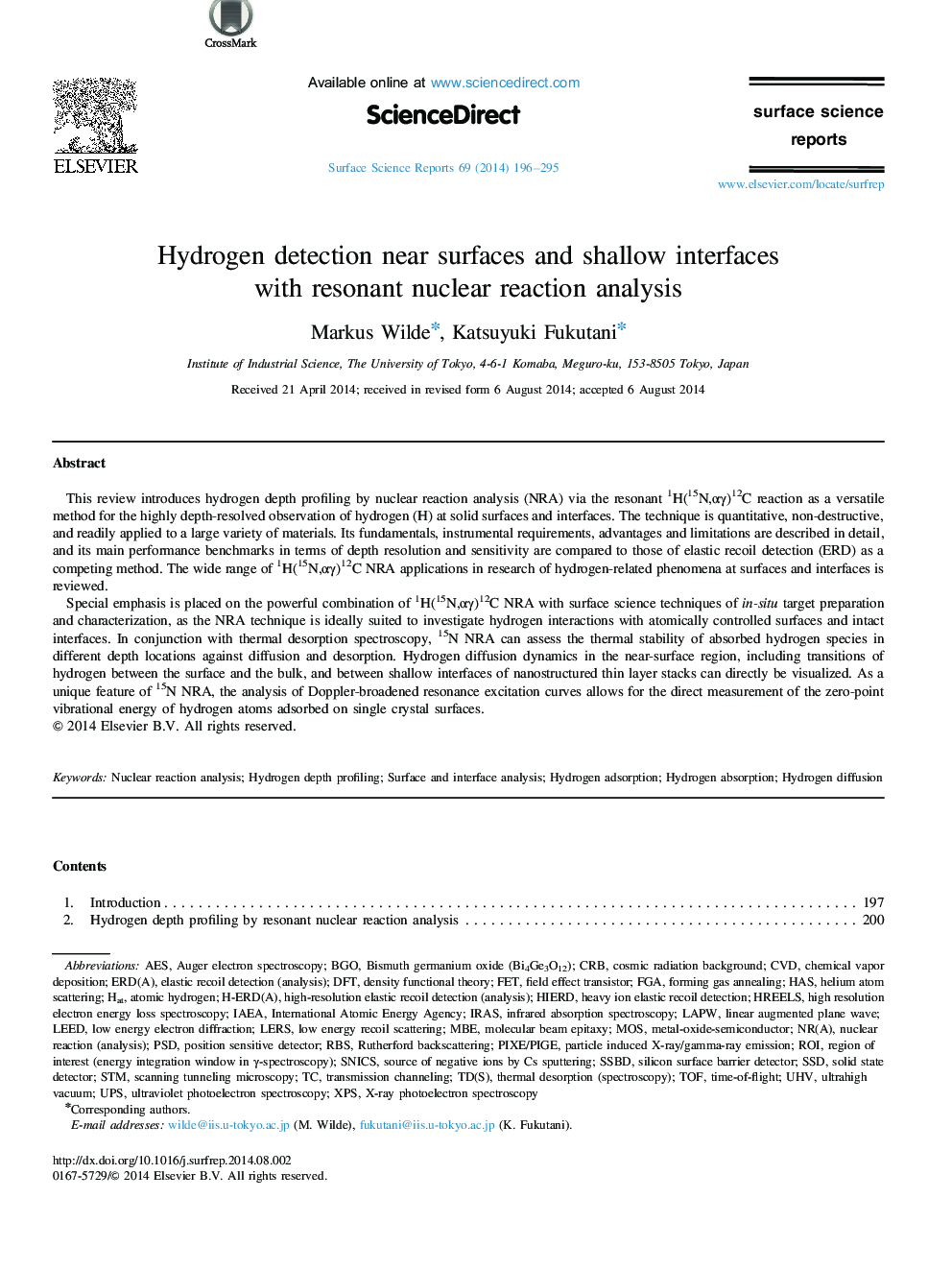| Article ID | Journal | Published Year | Pages | File Type |
|---|---|---|---|---|
| 7845123 | Surface Science Reports | 2014 | 100 Pages |
Abstract
Special emphasis is placed on the powerful combination of 1H(15N,αγ)12C NRA with surface science techniques of in-situ target preparation and characterization, as the NRA technique is ideally suited to investigate hydrogen interactions with atomically controlled surfaces and intact interfaces. In conjunction with thermal desorption spectroscopy, 15N NRA can assess the thermal stability of absorbed hydrogen species in different depth locations against diffusion and desorption. Hydrogen diffusion dynamics in the near-surface region, including transitions of hydrogen between the surface and the bulk, and between shallow interfaces of nanostructured thin layer stacks can directly be visualized. As a unique feature of 15N NRA, the analysis of Doppler-broadened resonance excitation curves allows for the direct measurement of the zero-point vibrational energy of hydrogen atoms adsorbed on single crystal surfaces.
Keywords
FGAtransmission channelingPIXE/PIGEIRASUHVMBELEEDLAPWHASMOSFETTOFCRBBGOSTMPSDROISSDRBSAesDFTSolid state detectorPosition sensitive detectorIAEAinternational atomic energy agencyhydrogen diffusionMolecular beam epitaxynuclear reaction analysisField effect transistorForming gas annealinghydrogen adsorptionHydrogen absorptionUltrahigh vacuumRutherford backscatteringChemical vapor depositionCVDTime-of-Flight Auger electron spectroscopyHigh resolution electron energy loss spectroscopyInfrared absorption spectroscopyX-ray photoelectron spectroscopyUltraviolet photoelectron spectroscopyXPSmetal-oxide-semiconductorHydrogen depth profilingScanning tunneling microscopyDensity functional theoryHREELSAtomic hydrogenLow energy electron diffractionHelium atom scatteringHATUPS
Related Topics
Physical Sciences and Engineering
Chemistry
Physical and Theoretical Chemistry
Authors
Markus Wilde, Katsuyuki Fukutani,
